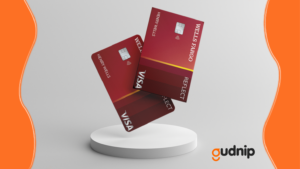In today’s uncertain economic climate, unexpected expenses can arise at any moment, leaving many individuals struggling to make ends meet. Whether it’s a medical emergency, car repair, or sudden job loss, having access to emergency funds can provide much-needed relief during times of financial distress.
The Importance of Emergency Loans
Emergency loans serve as a crucial tool for building a financial safety net, providing individuals with the means to cover unexpected expenses without resorting to high-interest credit cards or payday loans. By having access to emergency funds, individuals can avoid falling into a cycle of debt and maintain financial stability during challenging times.
Types of Emergency Loans
There are several types of emergency loans available to individuals in need of quick cash. These include:
- Personal Loans: Personal loans are unsecured loans that can be used for any purpose, including emergency expenses. They typically have lower interest rates than credit cards and can be repaid over a fixed period of time.
- Payday Loans: Payday loans are short-term, high-interest loans that are typically due on the borrower’s next payday. While they provide quick access to cash, they often come with exorbitant fees and can trap borrowers in a cycle of debt.
- Emergency Cash Loans: Emergency cash loans are designed specifically for unexpected expenses and can be obtained quickly, often within 24 hours. These loans may require collateral, such as a car title or paycheck, to secure the loan.
Benefits of Emergency Loans
There are several benefits to obtaining an emergency loan, including:
- Quick Access to Cash: Emergency loans provide individuals with immediate access to funds, allowing them to cover expenses without delay.
- Lower Interest Rates: Compared to credit cards and payday loans, emergency loans typically have lower interest rates, making them a more affordable option for borrowing money.
- Flexible Repayment Terms: Many emergency loans offer flexible repayment terms, allowing borrowers to repay the loan over a period of time that works for their budget.
Case Study: Sarah’s Story
Sarah, a single mother of two, found herself in a financial crisis when her car broke down unexpectedly. Without access to emergency funds, she was faced with the prospect of not being able to get to work and losing her job. Sarah applied for an emergency loan and was able to get her car repaired quickly, allowing her to maintain her job and financial stability.
Building a Financial Safety Net
Building a financial safety net is essential for protecting oneself against unexpected expenses and financial emergencies. By setting aside a portion of income each month for an emergency fund, individuals can ensure they have the resources needed to cover unforeseen costs without resorting to high-interest loans.
Tips for Building an Emergency Fund
Here are some tips for building an emergency fund:
- Set a Savings Goal: Determine how much you need to save for emergencies, such as three to six months’ worth of living expenses.
- Automate Savings: Set up automatic transfers from your checking account to your savings account each month to ensure consistent savings.
- Cut Expenses: Look for ways to reduce expenses and redirect those savings into your emergency fund.
Emergency loans play a vital role in building a financial safety net, providing individuals with the means to cover unexpected expenses and maintain financial stability during challenging times. By understanding the types of emergency loans available and the benefits they offer, individuals can make informed decisions about their financial well-being and avoid falling into a cycle of debt.
Titles for Google Discovery
1. “Emergency Loans: The Key to Financial Stability in Times of Crisis”
2. “Building a Financial Safety Net: How Emergency Loans Can Help You”
3. “The Importance of Emergency Funds: How to Protect Yourself Against Financial Emergencies”





